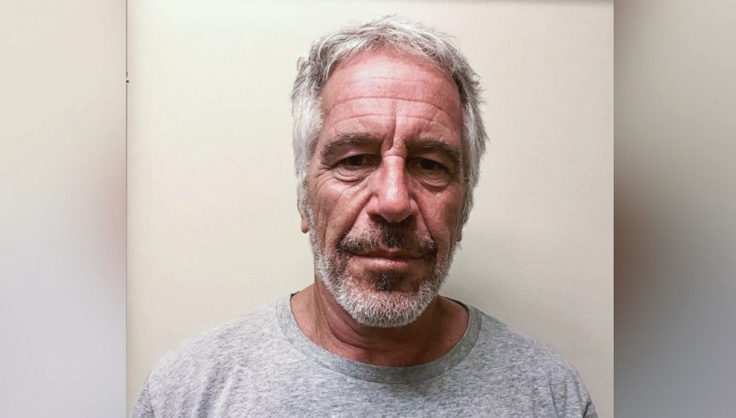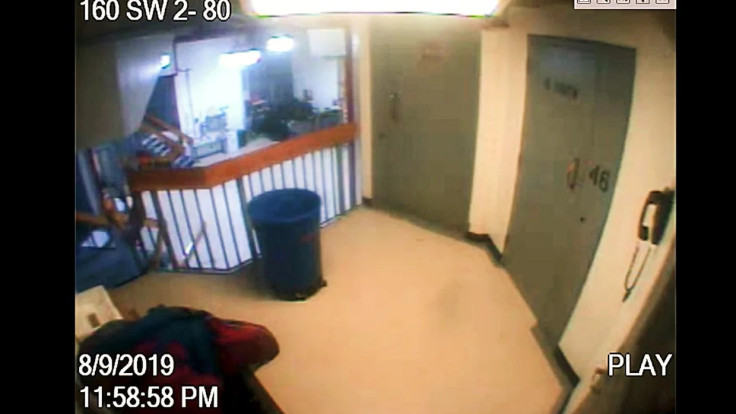
The Trump administration has been under scrutiny since July 7, when the FBI released a memo stating it would no longer provide additional documents related to Jeffrey Epstein, the convicted sex offender and former financier who died in federal custody in 2019. Later that month and in the middle of questioning from the MAGA base, the bureau made public two surveillance videos showing Epstein's final hours inside the Metropolitan Correctional Center in Manhattan before his death, which was officially ruled a suicide.
However, different investigations have raised further questions about the issue. Wired reported that the footage is missing a minute and has been edited. Moreover, another CBS News investigation into the footage showed further discrepancies.
In its memo, the FBI claimed the footage proved that "anyone entering or attempting to enter the tier where Epstein's cell was located from the SHU common area would have been captured by this footage." The bureau noted that although Epstein's cell was not visible in the videos, the staircase leading to it was in view, and access to the area required passing through two locked doors located off camera.
But according to CBS News, the videos do not clearly show whether Epstein returned to his cell or exited the Special Housing Unit (SHU) after completing an unmonitored phone call from a shower area. The phone line used was designated for attorney communications, not personal calls.
Jim Stafford, a forensic video analyst interviewed by CBS News, said the footage does not support the FBI's claim. "To say that there's no way someone could get to that stair up to his room without being seen is false," he said.

One of the discrepancies highlighted in the report involves what appears to be an "orange shape" ascending the stairs toward Epstein's tier around 10:40 p.m. Federal Bureau of Prisons (BOP) records and witness accounts suggest this may have been a corrections officer, believed to be Tova Noel, approaching Epstein's cell.
But video experts who reviewed the footage for the outlet said the figure could also be an inmate wearing an orange jumpsuit. "Based on the limited video, it's more likely it's a person in an [orange] uniform," said Conor McCourt, a retired NYPD sergeant and forensic video specialist.
Further scrutiny of the video raised additional doubts about its authenticity. Forensic experts consulted by CBS News pointed out the presence of an onscreen cursor and menu, which suggest the footage may have been captured via a screen recording instead of being exported directly from a digital video recorder system.
Stafford, who used specialized software to analyze the video's metadata, said the data indicated the file was created on May 23 of this year and likely represents a screen capture, not a raw, unedited export. Analysts also noted a change in the aspect ratio, reinforcing the possibility that the publicly released video was assembled from two separate clips rather than a continuous recording.
Government sources familiar with the investigation told CBS News that the FBI retains the original raw footage, but that it was not the version made public.
Another red flag, experts said, is a one-minute gap in the recording. The video skips from 11:58 p.m. to midnight, and when it resumes, the aspect ratio changes. This shift, according to experts, may indicate further editing.
When asked about the missing minute during a July 8 Cabinet meeting, Attorney General Pam Bondi said the gap was caused by a nightly system reset that regularly omits one minute of recording.
But CBS News, citing a government source, reported that the FBI, the BOP and the Department of Justice's Office of Inspector General all have full, unedited versions of the video that do not include the one-minute gap.
In addition, the outlet noted that the inspector general's report refers to two other surveillance cameras that were recording near Epstein's unit. Those videos have not yet been released.
Although federal officials have claimed the additional recordings do not contribute to the investigation, forensic experts said that the footage could still provide useful information, including whether the recording system experienced the reset described by Bondi.
© 2025 Latin Times. All rights reserved. Do not reproduce without permission.






